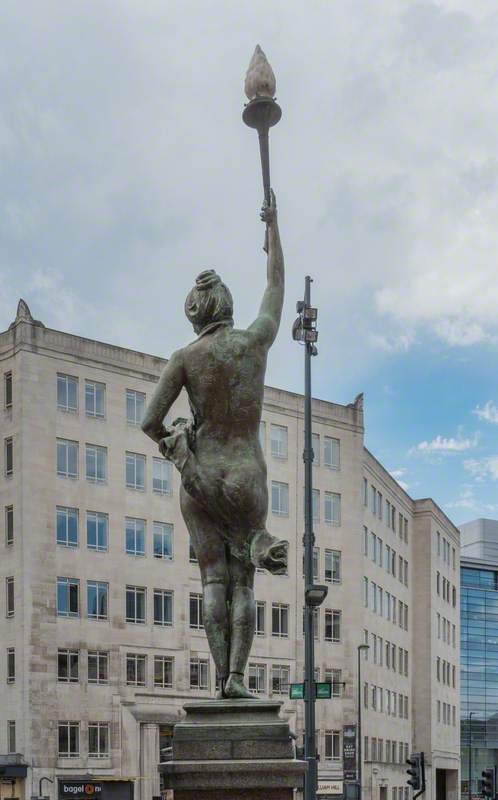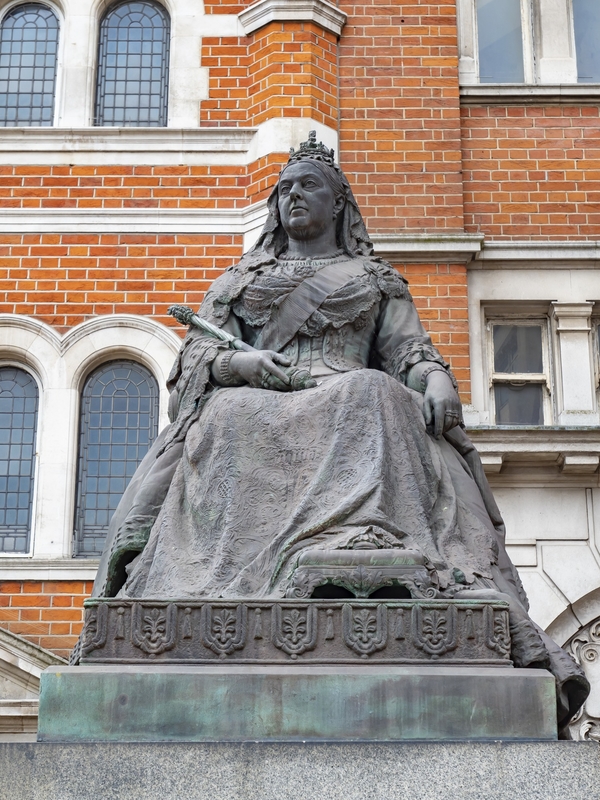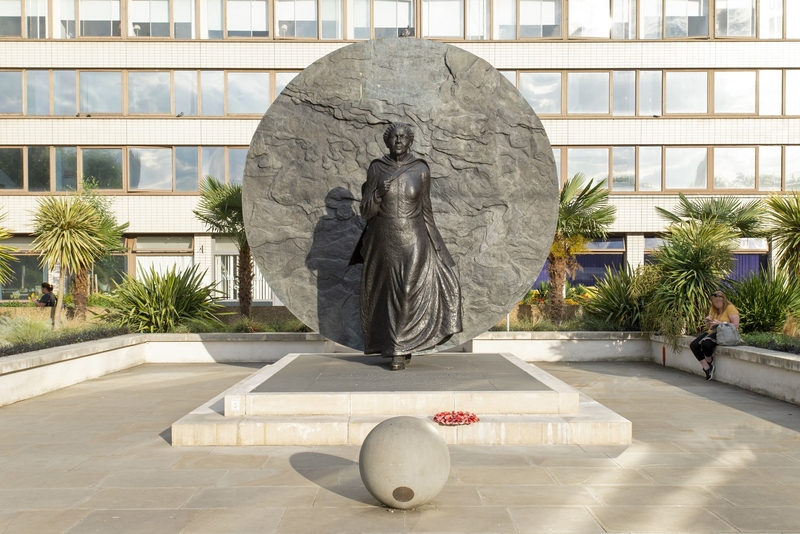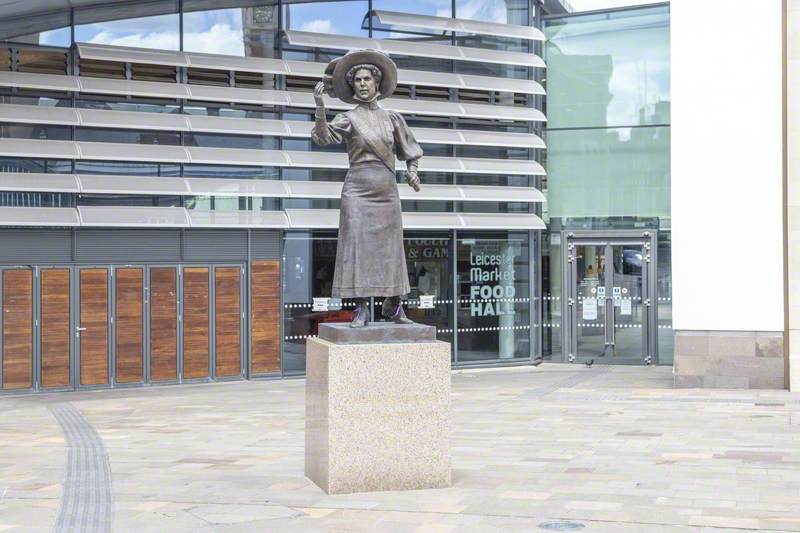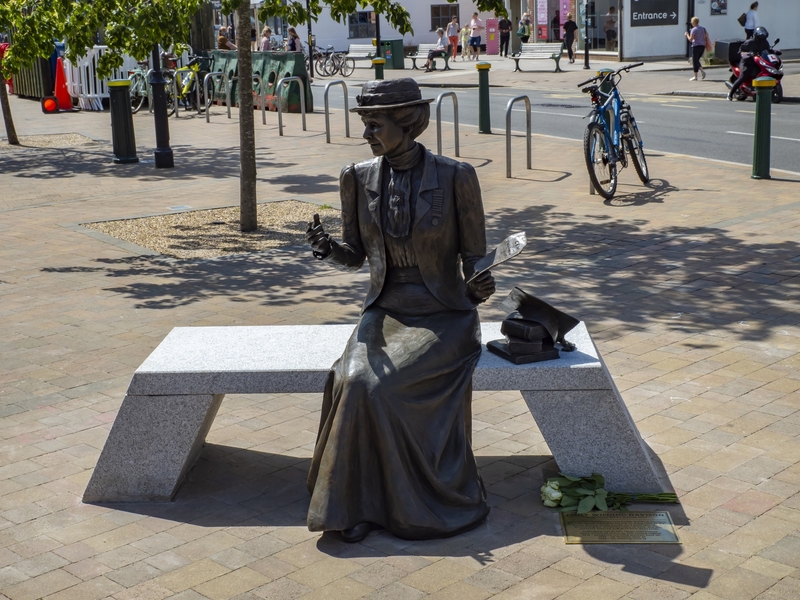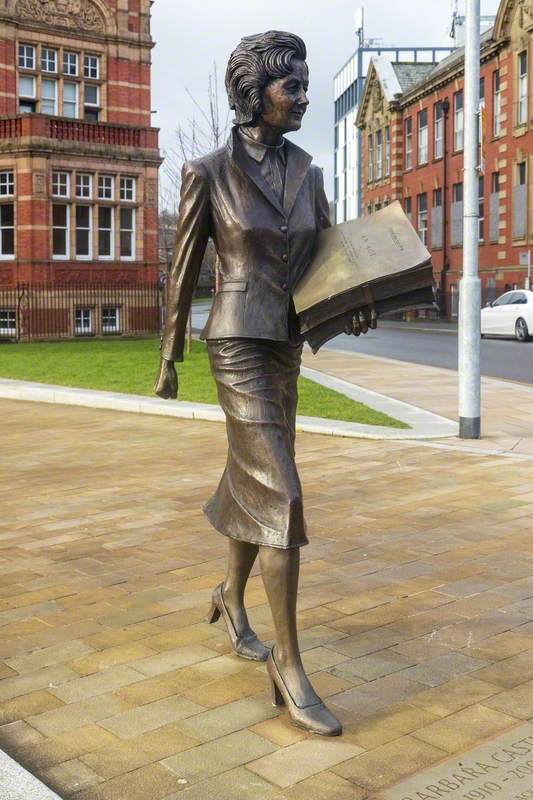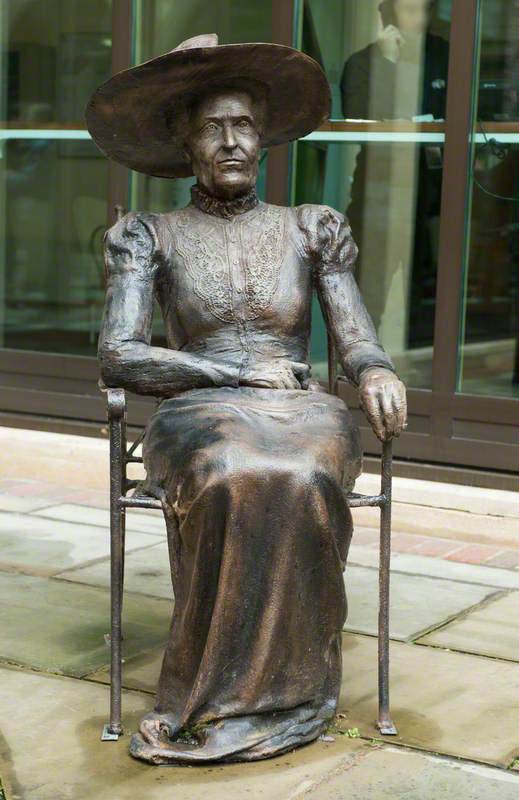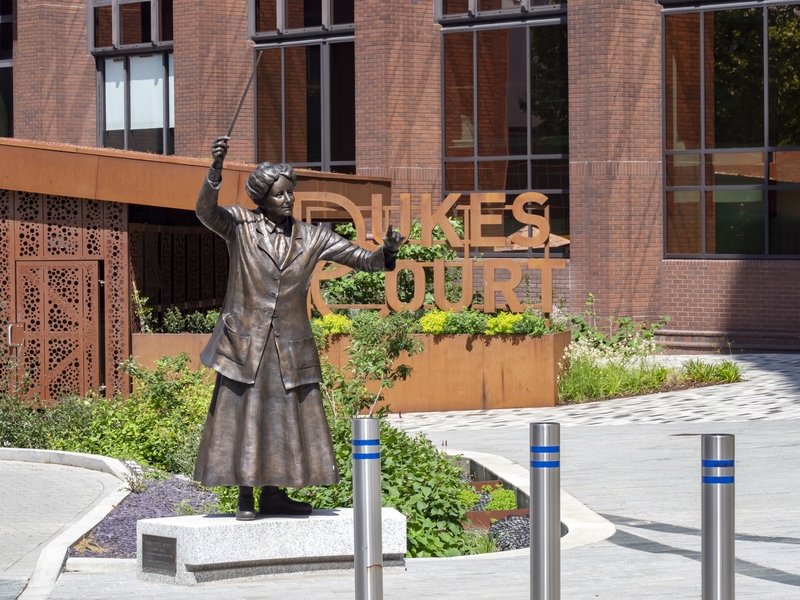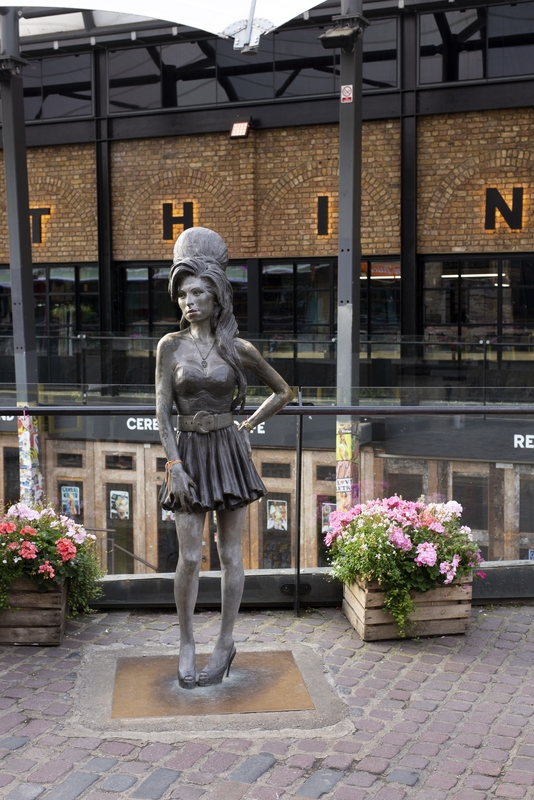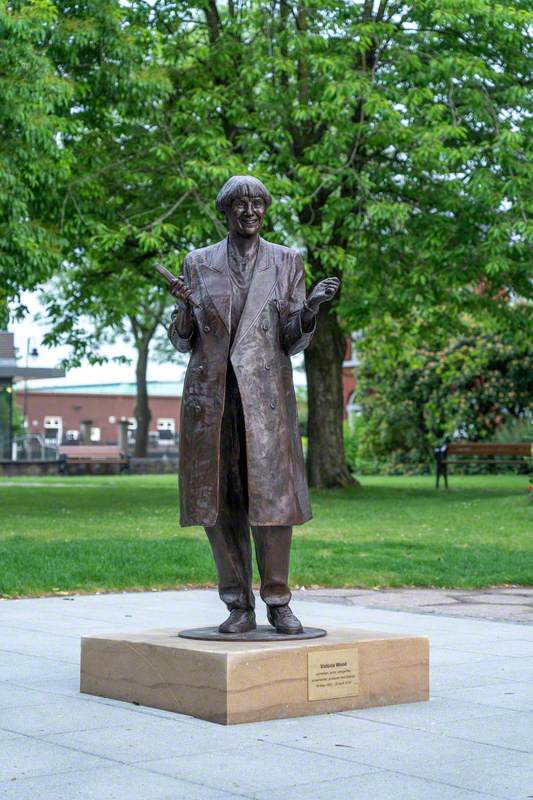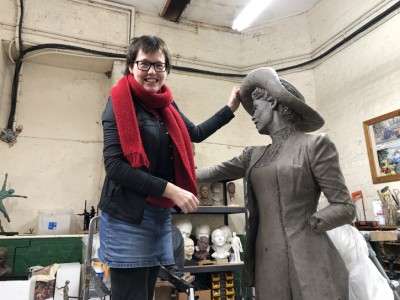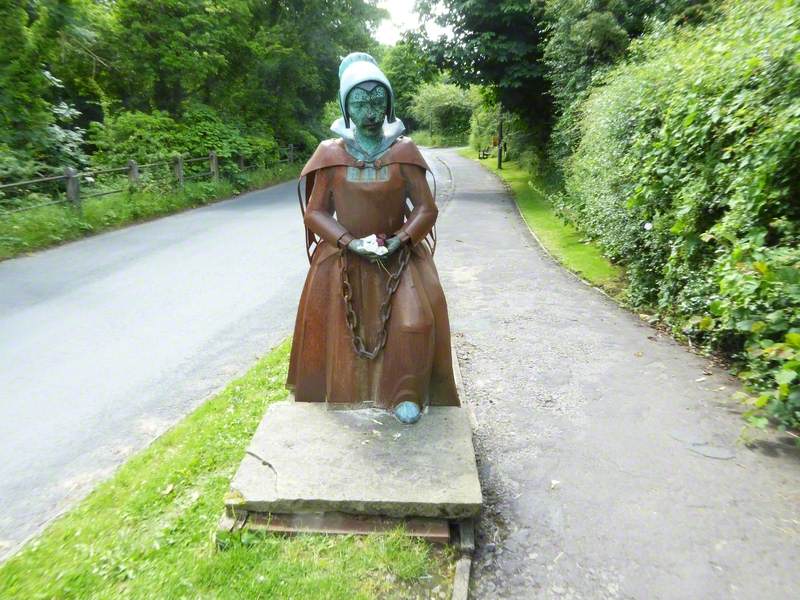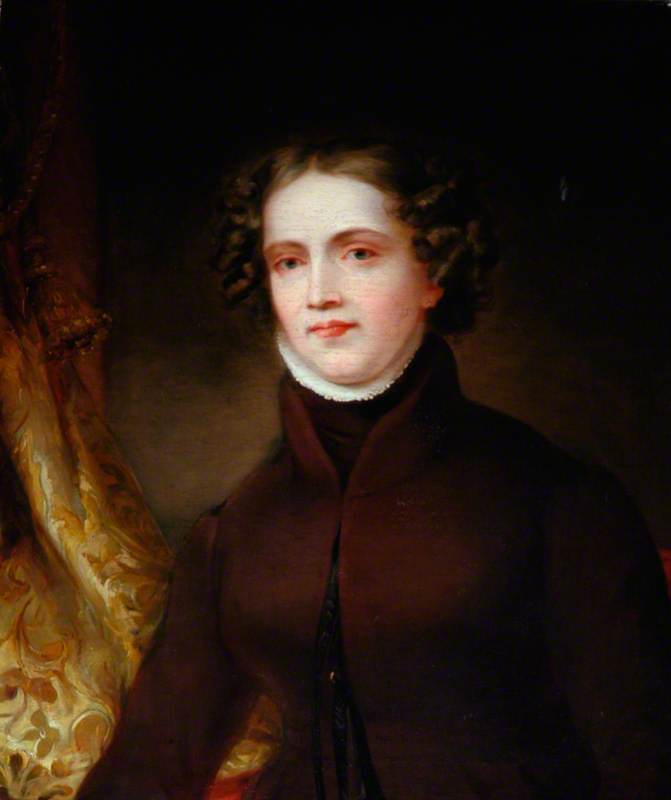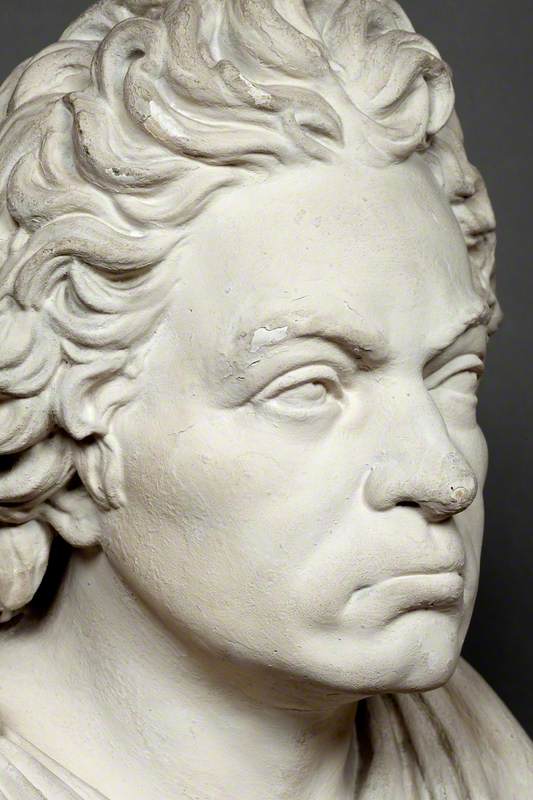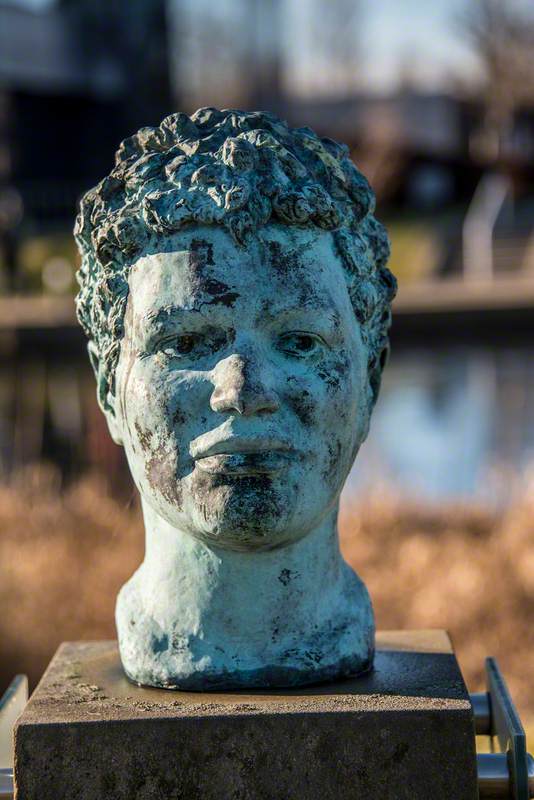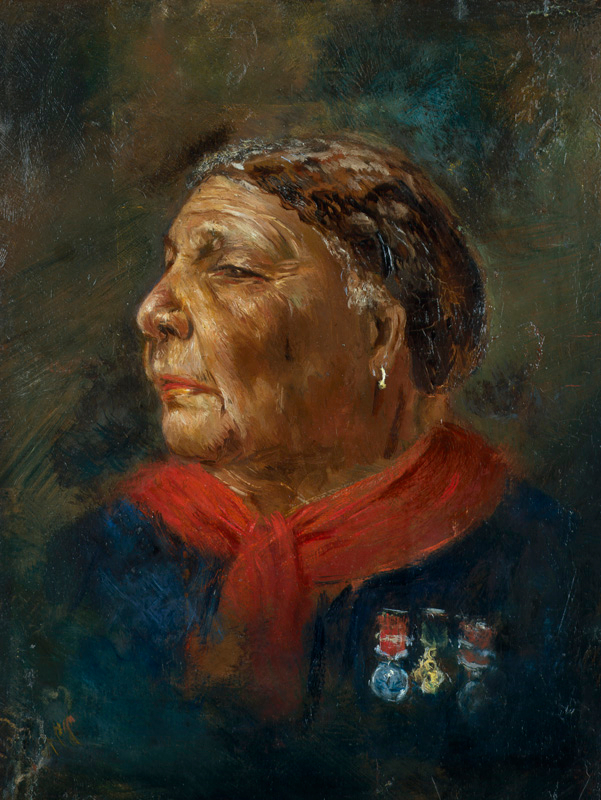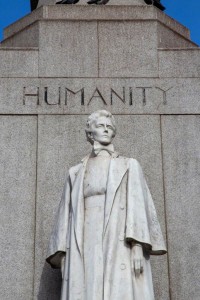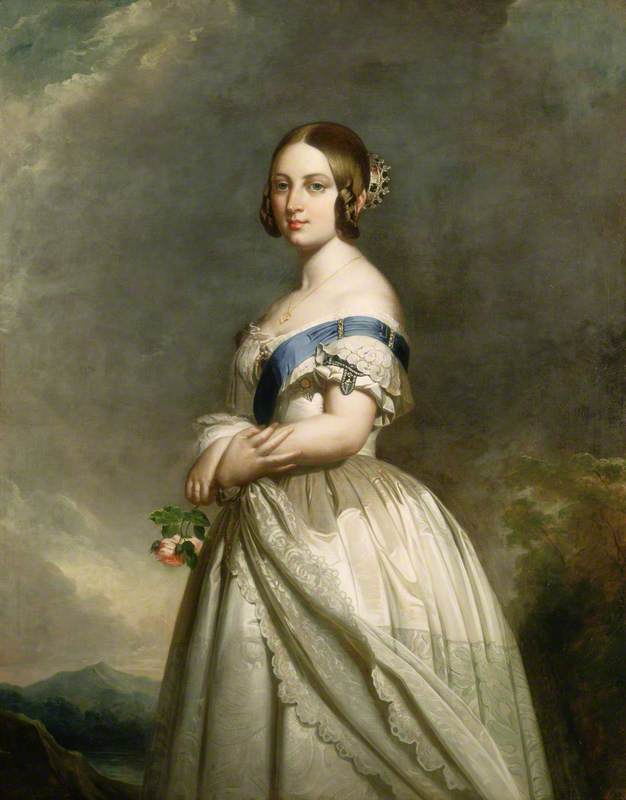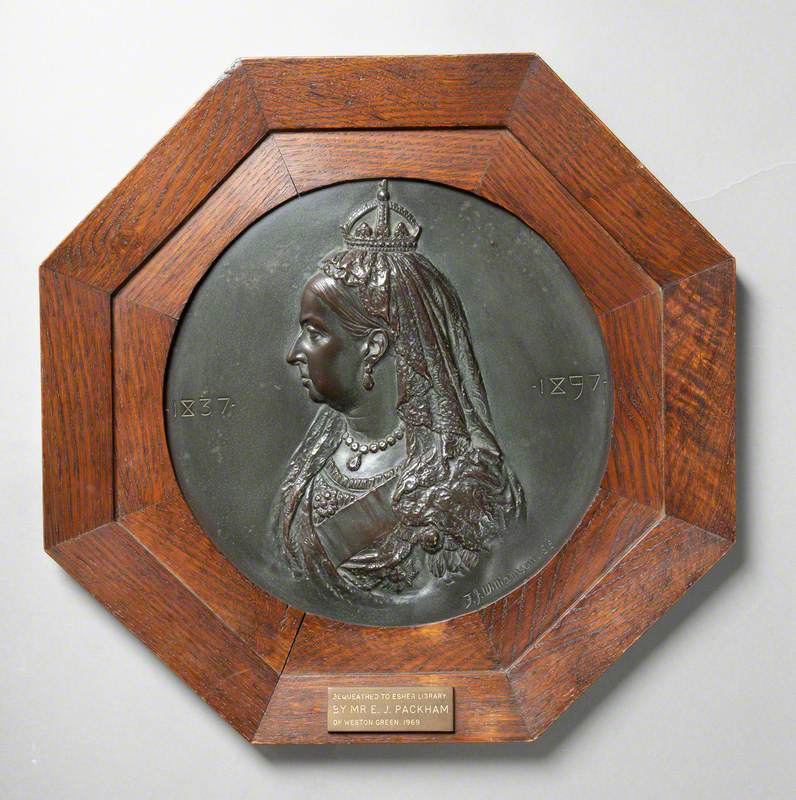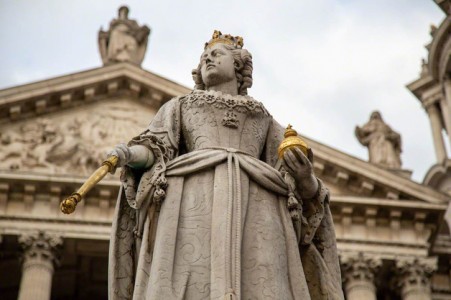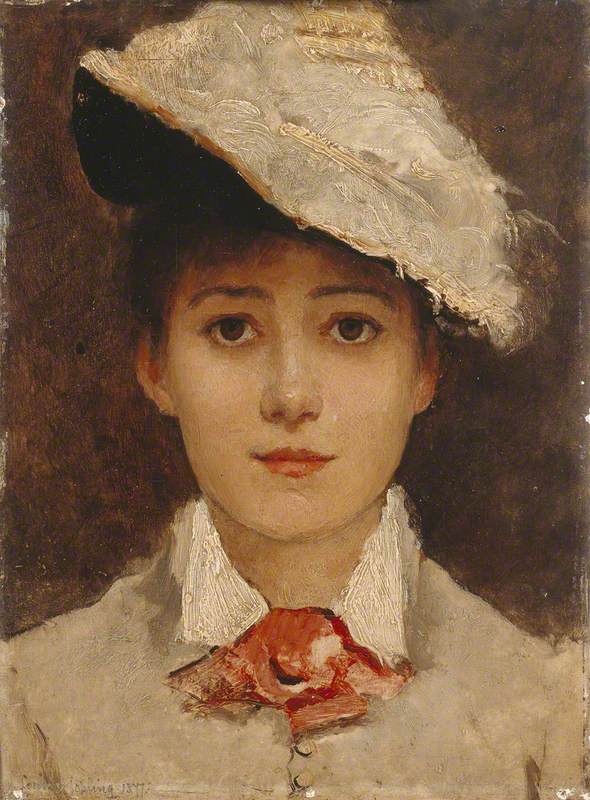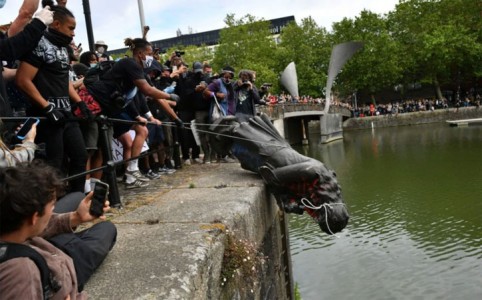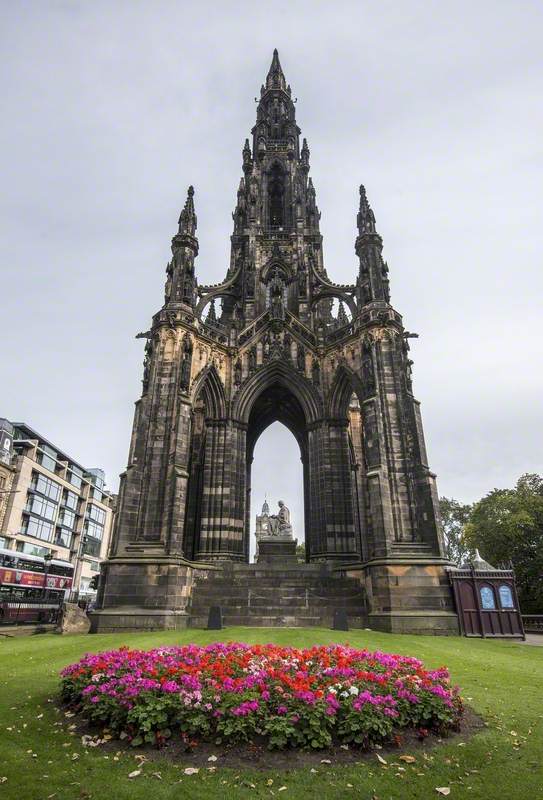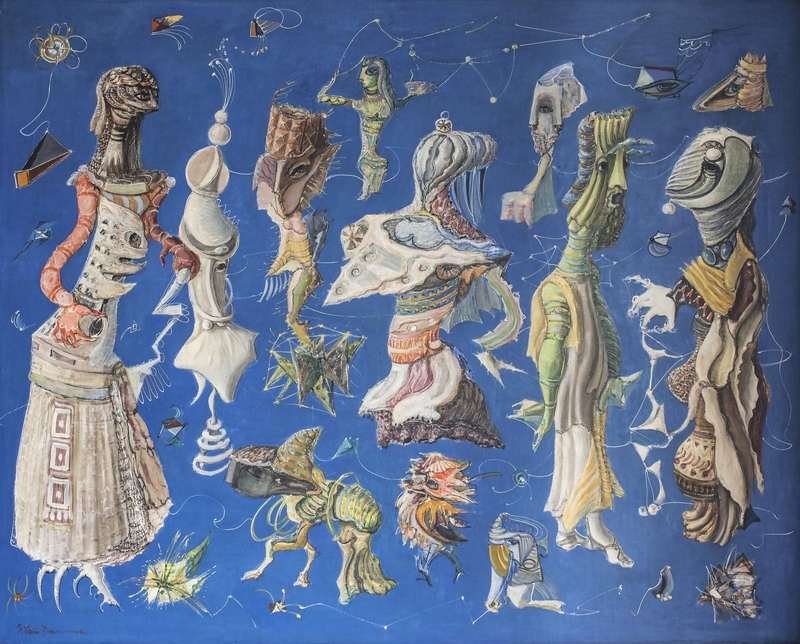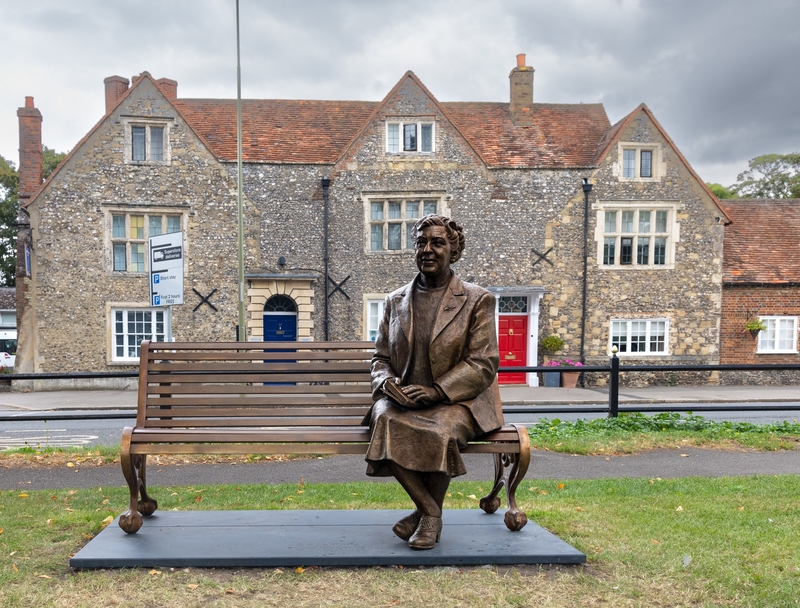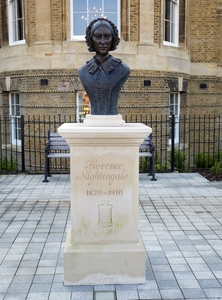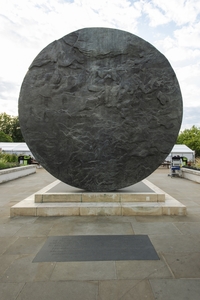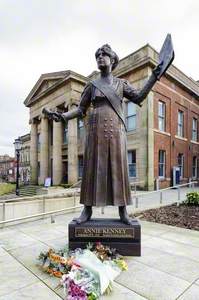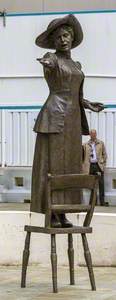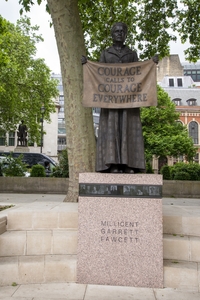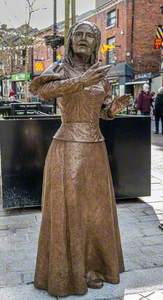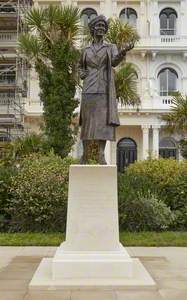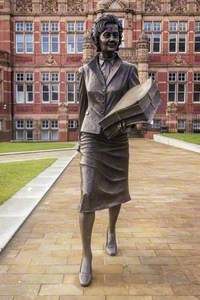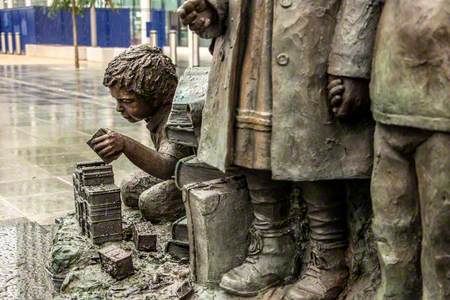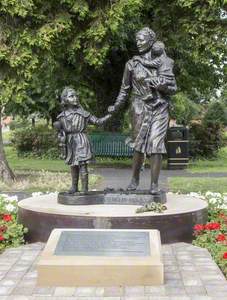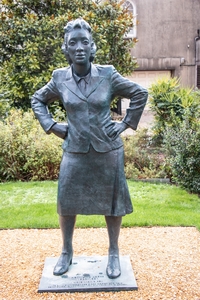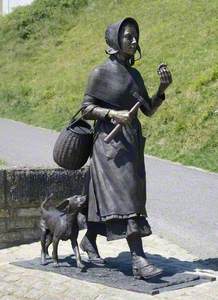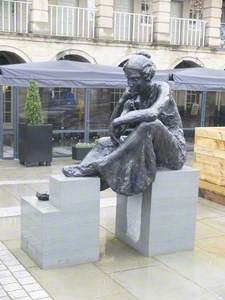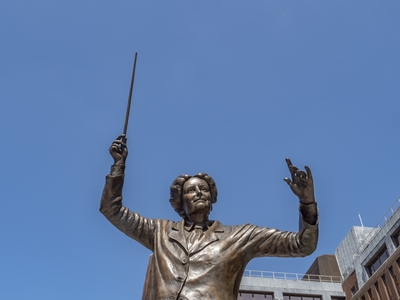A 1989 campaign by Guerrilla Girls famously asked if a woman had to be naked to get into New York's Met Museum.
In the same vein, depictions of women as the subject of sculpture have traditionally been focused on mythical beings or personifications (i.e. naked ladies) or royalty (mainly Queen Victoria).
It seems that the nation (and perhaps the world) is slowly moving away from this way of thinking, as more and more statues are being created to honour the remarkable women who have shaped our society.
Here are a few of the more recent ones Art UK has recorded in the course of our sculpture project.
Florence Nightingale is the most well-represented woman in UK public sculpture who isn't royalty. The Lady with the Lamp has been memorialised since her own lifetime, but this recent bust in Aldershot by Amy Goodman was unveiled in 2021.
As a nurse, Nightingale represented the kind of woman that Victorians (and later Edwardians) seemed happy to commemorate. This can be seen in the other public statues to her, but also those of nurses Sister Dora and Edith Cavell, the First World War heroine.
However, it took until 2016 before Nightingale's contemporary Mary Seacole received a statue in her honour.
Sited in St Thomas' Hospital in Lambeth the work by Martin Jennings is a welcome addition to public sculpture, representing a woman of colour who made a huge contribution to healthcare.
It is always sobering to remember that even though some women were celebrated during the Victorian era, none of them had a vote – even Queen Victoria! It took the campaigning of the Suffragettes (and other groups) to force the change in the law.
As with all suffrage law changes, these rights were won slowly, but the first (property-owning) women (aged over 30) were allowed to vote in 1918. When the centenary of this milestone was marked in 2018, various local campaigns for statues to some of the more prominent women came to fruition.
In Oldham, Annie Kenney was immortalised in 2018 by Denise Dutton. She stands outside the old town hall, unveiled on the anniversary of the law passing, 14th December.
In nearby Manchester, Hazel Reeves' statue of Emmeline Pankhurst was unveiled with great ceremony on the same day.
'Rise up, women' (Emmeline Pankhurst, 1858–1928)
2018
Hazel Reeves and Bronze Age Sculpture Casting Foundry 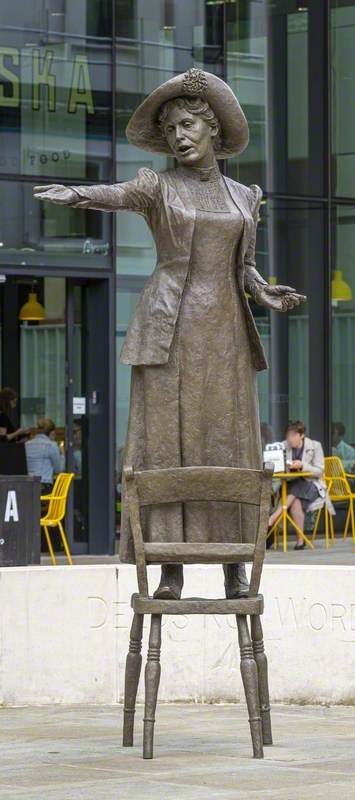
Earlier in the year, Parliament Square in London welcomed a new resident in the form of Millicent Garrett Fawcett, bearing the powerful message 'COURAGE CALLS TO COURAGE EVERYWHERE', and with a series of other suffragist campaigners depicted around the plinth.
Fawcett's statue by Gillian Wearing joined the ranks of men already there – Winston Churchill (since 1973), Abraham Lincoln (since 1920) and Mahatma Gandhi (since 2015).
One of the faces on the plinth of the Parliament Square statue was that of Elizabeth Wolstenholme Elmy, another campaigner for women's suffrage and rights. She has also had a statue built to her, which was unveiled in 2022 in Congleton in Cheshire.
Elizabeth Wolstenholme Elmy (1833–1918)
2022
Hazel Reeves and Bronze Age Sculpture Casting Foundry 
In Leicester, the statue of Alice Hawkins was unveiled in February 2018. Hawkins was a boot and shoe machinist, and was imprisoned five times for acts committed as part of the Women's Social and Political Union militant campaign.
Not all the activists saw the change in the law pass – Emily Wilding Davison famously stepped in front of George V's horse at the 1913 Epsom Derby and died four days later. There is a commemorative statue to her in Epsom.
There is also a statue to Davison by Ray Lonsdale in Morpeth in Northumberland, the town where her family originated.
Following on from the sacrifices of those who gained women the vote, statue campaigners have turned their attention to prominent women politicians. During the twentieth century, various women became the 'first' in different fields of politics, as gradually barriers were broken down. It has only been in the past few years, however, that any of them have been recognised with public sculpture.
The first woman elected as a UK MP was Constance Markievicz, a Sinn Féin candidate who did not take her seat for a number of reasons – she was in prison at the time, and the party did not (and still does not) take their seats in Westminster. There is no statue to her in the UK, although there are at least two in Dublin alone.
The first woman to take her seat as an MP was Nancy Astor. Her statue now stands in Plymouth, where she was MP for 26 years, outside her family home on Elliot Terrace.
Unveiled by former Prime Minister Theresa May, the statue has proved controversial to some as Astor reportedly held views which were antisemitic, anti-Catholic, anti-Communist and sympathetic to the Nazi regime in Germany. In the past, this has not stopped the commemoration of many men in public statue form, so it serves as a reminder that if we are to look at history, we must look at all parts of it and not just selectively.
There are other women MPs whose celebration has been less controversial.
In 2018 Northamptonshire Borough Council erected a number of statues of famous figures associated with the town outside the Guildhall. One of these was Margaret Bondfield, who became the MP for Northampton in 1923.
Bondfield was appointed Minister of Labour in the Labour government of 1929–1931, making her the first female cabinet minister and the first female privy counsellor in the UK. She was known for championing workers' rights and equal opportunities for women.
Similarly, in 2021 Blackburn unveiled a statue of Barbara Castle striding in front of the former Technical School (known as the Victoria Building).
Castle was one of the UK's longest-serving MPs – she was the MP for Blackburn between 1945 and 1979 – and famously introduced the Equal Pay Act in 1970, which she is depicted as carrying in her left arm.
In the past, statues were put up to men of a certain class or occupation – royalty, of course, but also typically military leaders, scientists, inventors, poets and authors. It's a very old-school idea of what a hero might be, and this idea of who is placed on a pedestal is also changing.
Many of the women who are now being commemorated have pioneered in different ways to those who we might have lionised in the past.
For example – and perhaps incredibly – the first statue of a named woman of colour in Wales is that of Betty Campbell, unveiled in 2021.
Betty Campbell (1934–2017), MBE
2021
Eve Shepherd and Castle Fine Arts 
Campbell was Wales' first Black head teacher. Born in Cardiff in 1934, to a Welsh Barbadian mother and Jamaican father, Campbell was chosen as the subject of the sculpture by thousands of people who voted for her in a BBC Wales poll – a rather more democratic process than the majority of statues in the past.
Staying in Wales, this statue of Elaine Morgan was unveiled in 2022 in Rhondda Cynon Taf.
Elaine Morgan (1920–2013)
2022
Emma Rodgers (b.1974) and Castle Fine Arts 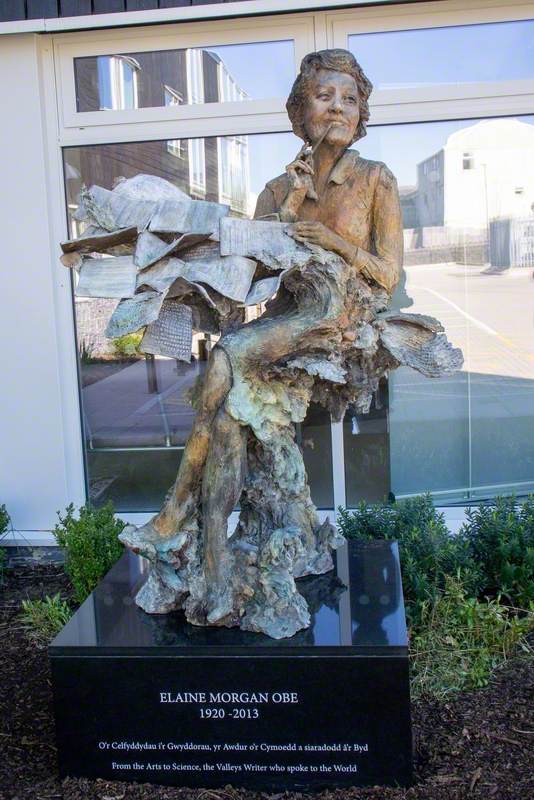
Morgan was a writer both on evolutionary anthropology and for television.
The statues of Campbell and Morgan were commissioned by the Monumental Welsh Women project, and they have more on the way in the future.
Perhaps with the benefit of looking at all the statues of men put up during previous centuries, and the ensuing continuing debate around them, today we can hope to truly honour those who have done good.
When you first encounter the name Lady Wantage – a noted art collector and benefactor, and one of the wealthiest women of her time – you might think that this is another commemoration of a rich person who didn't do very much.
However, with her husband, she was instrumental in setting up the National Aid Society, which was the forerunner of the British Red Cross Society. In 1892 she donated Abington Manor House and land from the estate to the people of Northampton for use as a park and museum.
Our next sculpture depicts Polish woman Irena Sendler rushing through the streets of Warsaw, bullet casings under foot, and infant held close in her arm while holding the hand of another child at her side.
She was responsible for rescuing over 2,000 Jewish children, smuggling them out of the Warsaw Ghetto.
In 2021 Bristol University unveiled a statue of Henrietta Lacks, a Black American woman whose cells were the first ever to survive and multiply outside the body, and whose use changed the course of modern medicine.
It is, remarkably, the first public statue of a Black woman made by a Black woman in the UK. The poignant inscription includes the words: 'More than a cell. To all the unrecognised Black Women who have contributed to humanity, you will never be forgotten.'
Another story that had largely been forgotten is that of the Snail in the Bottle Case. This sculpture in Renfrewshire aims to remember this important case.
Dear Duty (the 'Snail in the Bottle' case)
2018
Mandy McIntosh (b.1967) and Powderhall Bronze (founded 1989) 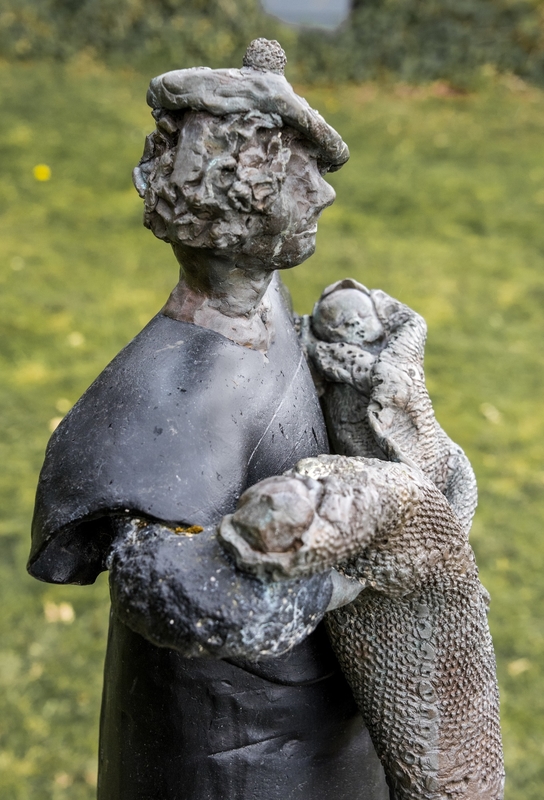
It depicts May Donoghue, who visited a Paisley café in 1928 and was served a bottle of ginger beer contaminated by a dead snail. This caused her severe illness and discomfort.
Her initial legal complaint against the drink manufacturer was dismissed, but Donoghue pursued it all the way to the House of Lords, and in doing so she changed legal history. Donoghue was a working-class single parent, and she had to publicly declare her poverty to proceed with her complaint. Her lawyer worked for no fee. She was ridiculed and called a liar, but in 1932 the case was won. The result established The Duty of Care as a principle in law, which underpins the ethos of the NHS and other social care provisions.
Some women want to change the world for the better, and Greta Thunberg's high-profile climate crisis activism has provided a figurehead for her generation.
Make a Difference (Greta Thunberg, b.2003)
2019–2021
Christine Charlesworth (b.1949) 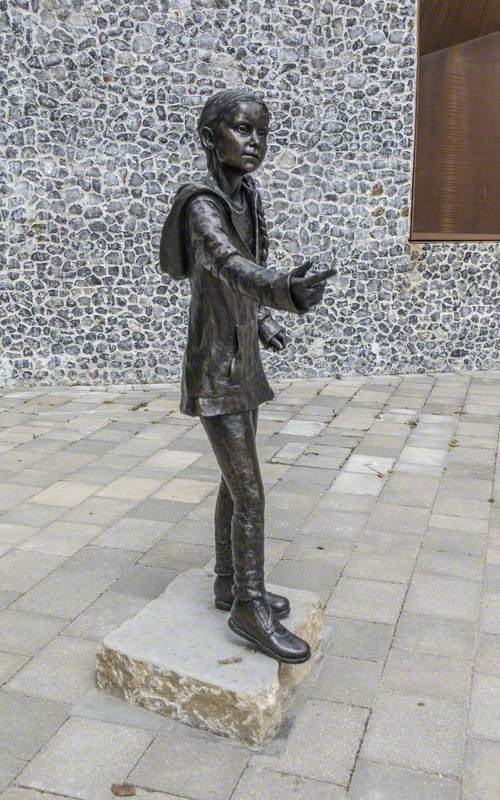
This sculpture of her is outside the University of Winchester. It has the telling title 'Make a Difference'.
Some of the women with recent statues have had to wait some considerable time to receive any kind of recognition.
Also in Winchester, the thirteenth-century Licoricia of Winchester is depicted with her son Asser. Licoricia has been described as the most important Jewish woman in medieval England.
Licoricia of Winchester (d.1277) and Asser
2022
Ian Rank-Broadley (b.1952) 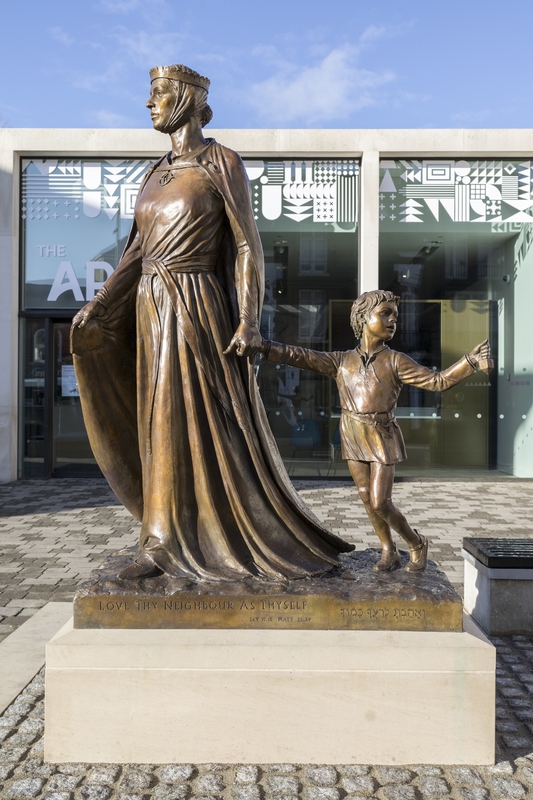
She lent money, financing various key people across the south of England. However, she was killed in 1277 and her murder was never solved. Life for Jews in medieval England became increasingly difficult during this period, and after her death, Licoricia's family were banished (with the entire Jewish community) by the 1290 Edict of Expulsion.
A slightly more edifying story is of pioneering palaeontologist and fossil hunter Mary Anning, whose statue was unveiled in May 2022 in her home town of Lyme Regis in Dorset.
You can read more about how this work came about in our story talking to sculptor Denise Dutton.
The recent TV series Gentleman Jack has brought the early nineteenth-century Halifax businesswoman Anne Lister into the public eye.
Contemplation, Anne Lister (1791–1840)
2020–2021
Diane Lawrenson (b.1946) 
Played to perfection by Suranne Jones in the show, this sculpture of Lister was commissioned by the Piece Hall Trust. It is the first public sculpture of the famous lesbian diarist, businesswoman and owner of Shibden Hall.
Let's end this whistlestop tour with a trio of musical women. First up, it's Dame Ethel Smyth in Woking, unveiled on 8th March 2022, International Women's Day.
Smyth was a brilliant and prolific composer, and also an activist for women's suffrage. These two roles collided with her composition The March of the Women, which became the anthem of the Suffragette movement.
But like many female composers, her music has not been as widely performed as it perhaps should have been. Fortunately, things seem to be changing – her opera The Wreckers was performed recently at Glyndebourne to great acclaim, and has been described as the 'most important English opera composed during the period between Purcell and Britten.'
To put into context how backward the classical music world can be, and how important her music was, Smyth's Der Wald was the only opera by a female composer performed at The Metropolitan Opera in New York until 2016 (!).
Seamlessly sliding into the twenty-first century, Camden is the location for this poignant statue to the troubled yet brilliant Amy Winehouse, who died in 2011.
Finally on this list is a true great – a musician, playwright, comedian, and performer. It's Victoria Wood, whose untimely death in 2016 robbed the world of such a great talent.
Her statue now stands in Bury, Greater Manchester. Now that's a real queen Victoria.
Andrew Shore, Head of Content at Art UK
